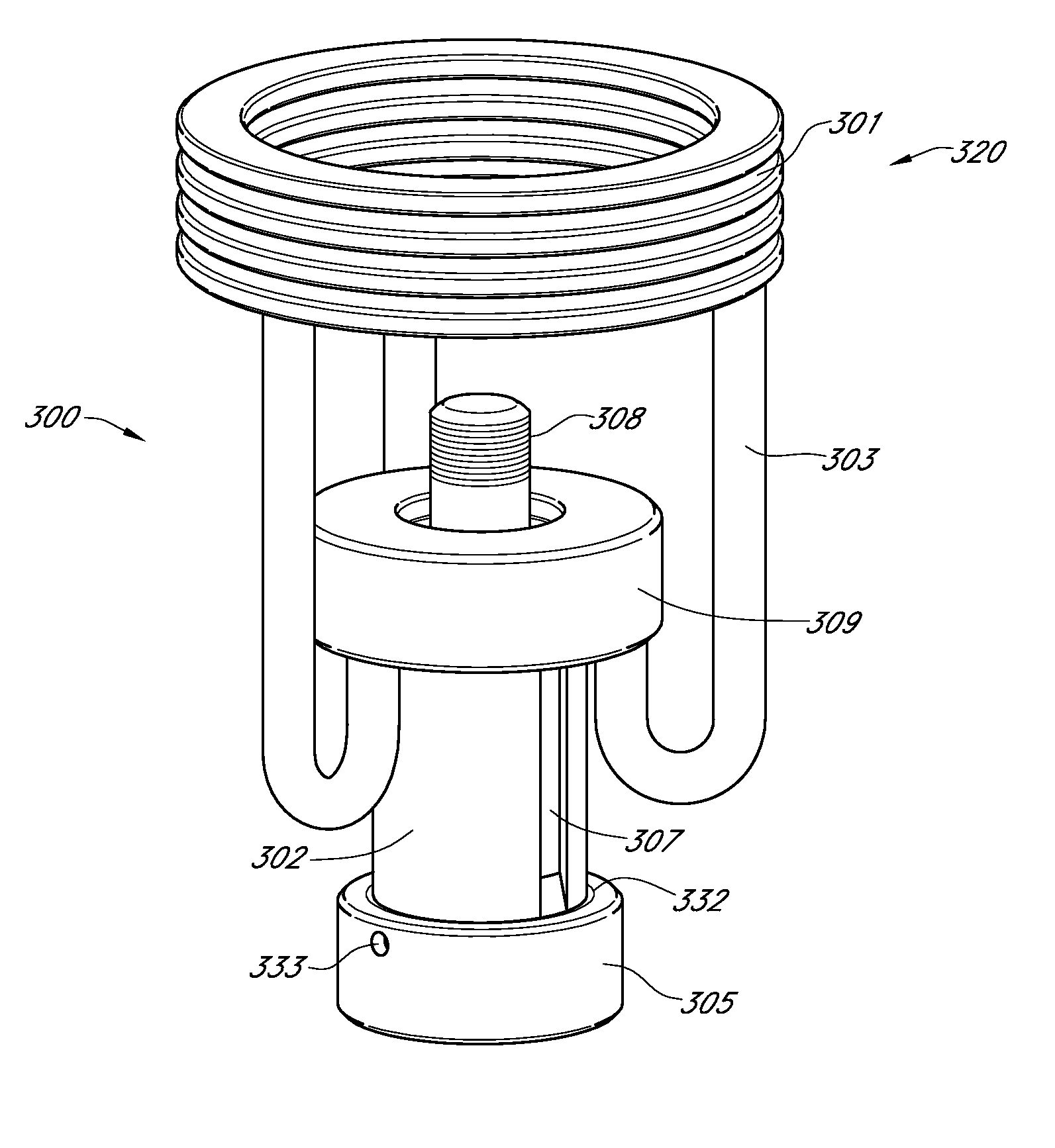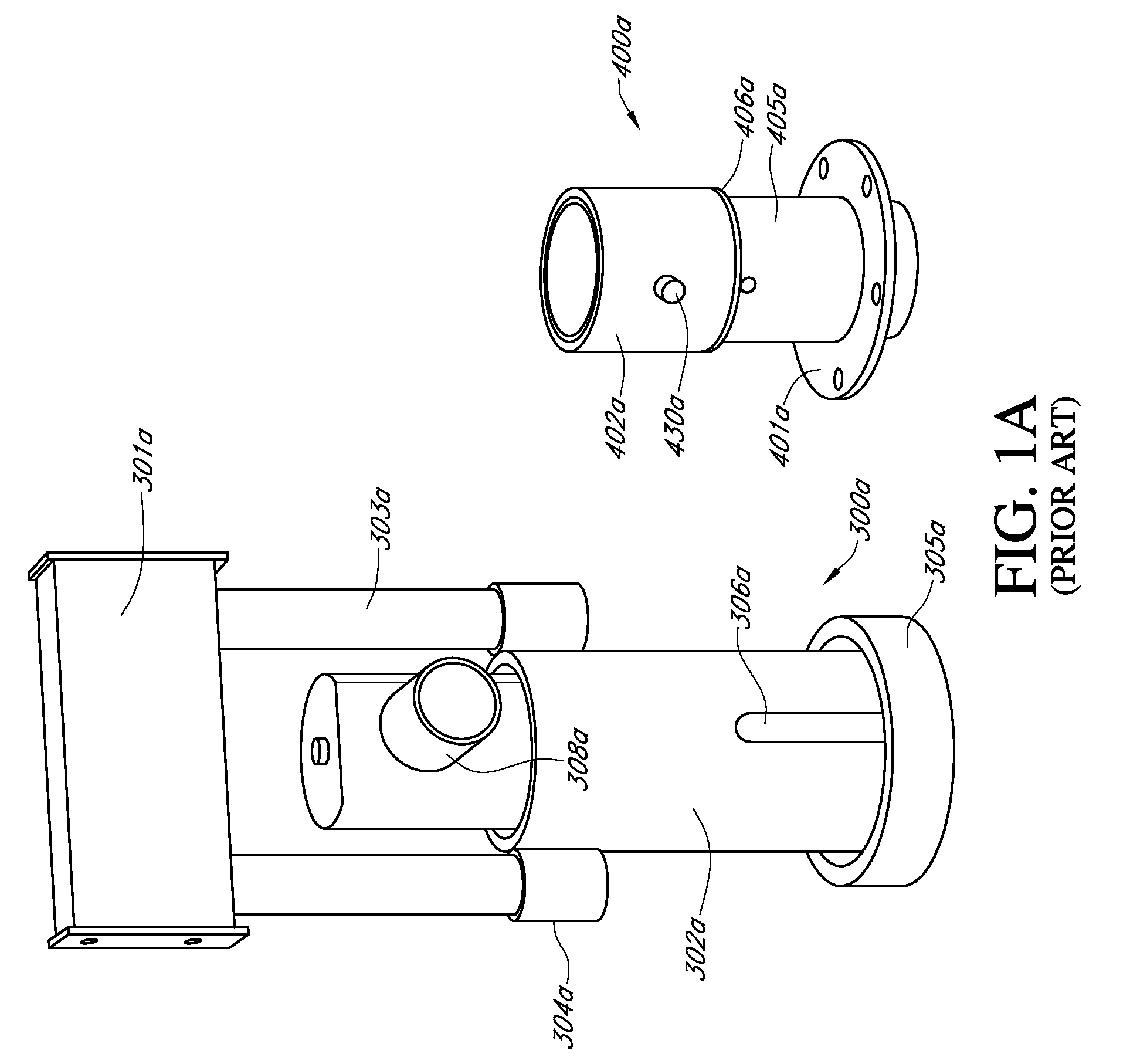Robotically mateable rotary joint electrical connector
a technology of electrical connectors and rotary joints, applied in the direction of coupling device connections, instruments, optical elements, etc., can solve the problems of not being suitable for general use, not many suitable for harsh or underwater environments, and not being able to rotate the keying
- Summary
- Abstract
- Description
- Claims
- Application Information
AI Technical Summary
Benefits of technology
Problems solved by technology
Method used
Image
Examples
Embodiment Construction
[0038]Certain embodiments as disclosed herein provide for a multi-circuit electrical connector having plug and receptacle units that can be mated and de-mated robotically without need to rotationally align the units.
[0039]After reading this description it will become apparent to one skilled in the art how to implement the invention in various alternative embodiments and alternative applications. However, although various embodiments of the present invention will be described herein, it is understood that these embodiments are presented by way of example only, and not limitation. As such, this detailed description of various alternative embodiments should not be construed to limit the scope or breadth of the present invention.
[0040]FIGS. 1A and 1B illustrate typical, existing connectors designed for underwater robotic mating and demating, for example by manned or ROV submersibles. The connectors each comprise one part intended to be sealably flange-mounted to an enclosed volume, such...
PUM
 Login to View More
Login to View More Abstract
Description
Claims
Application Information
 Login to View More
Login to View More - R&D
- Intellectual Property
- Life Sciences
- Materials
- Tech Scout
- Unparalleled Data Quality
- Higher Quality Content
- 60% Fewer Hallucinations
Browse by: Latest US Patents, China's latest patents, Technical Efficacy Thesaurus, Application Domain, Technology Topic, Popular Technical Reports.
© 2025 PatSnap. All rights reserved.Legal|Privacy policy|Modern Slavery Act Transparency Statement|Sitemap|About US| Contact US: help@patsnap.com



